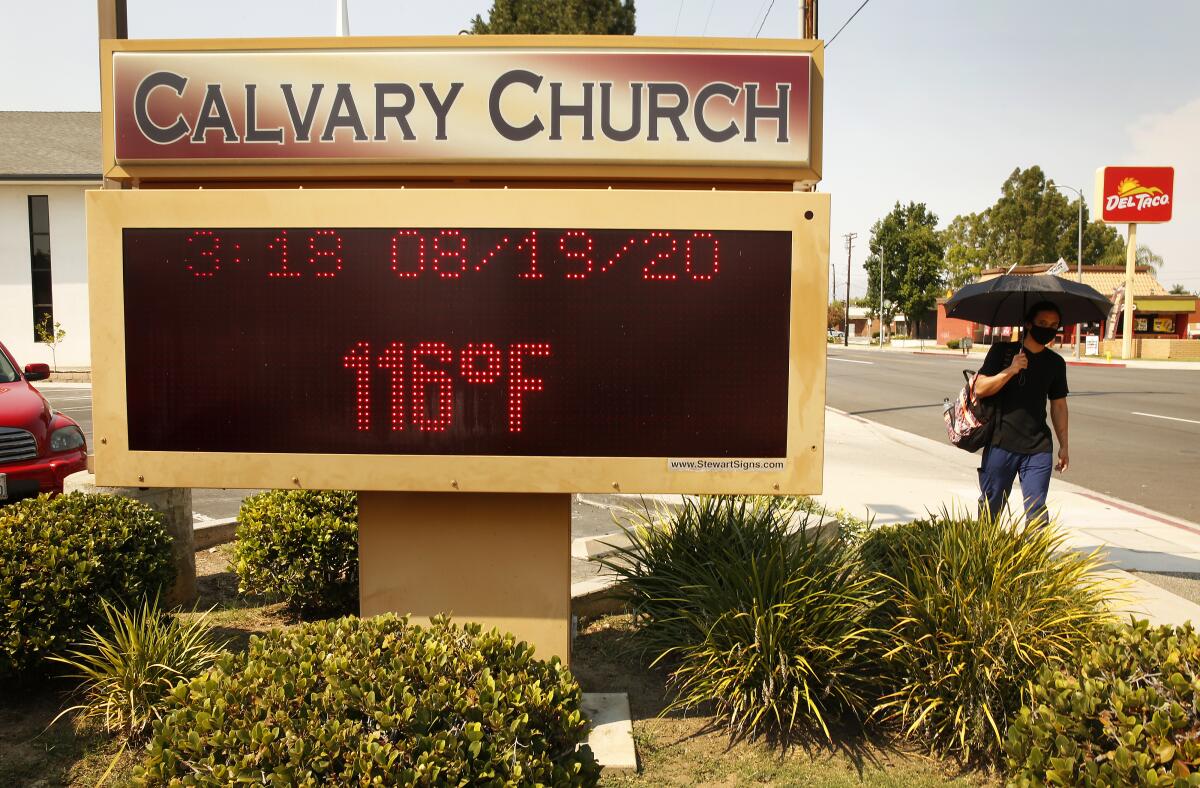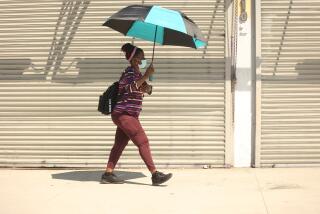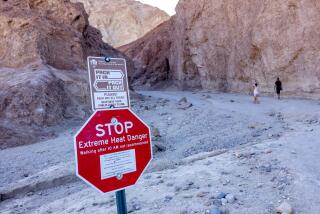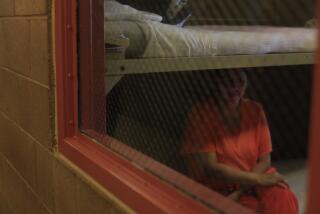Editorial: The unjust toll of extreme heat

Woodland Hills last summer.
- Share via
Extreme heat kills more people in an average year than any other weather-related hazard, including hurricanes and tornadoes. As climate change fuels more frequent and severe heat waves, the death toll is only going to grow — unless California takes aggressive action now to cool communities.
But advocates are deeply concerned that programs to prepare for extreme heat could get cut in the political fight over how to spend nearly $3.7 billion that Gov. Gavin Newsom and lawmakers have budgeted for climate resilience. Their fear is understandable. Heat waves have been overlooked and underfunded as a climate threat in California, compared with wildfires, coastal erosion and other more visually dramatic events. That cannot continue.
Heat is a silent killer. It exacerbates underlying health conditions, such as heart disease, respiratory disease and diabetes. It can be deadly for those who work outside. And it can worsen lung-damaging air pollution.
Yet extreme health has gotten less attention as a climate threat because it’s often treated as a temporary inconvenience, one that can be managed if people stay hydrated and remain inside with the air conditioning on. That advice highlights a very real problem: Extreme heat is not an equal-opportunity threat. It poses the gravest risk to disadvantaged communities, often in urban areas.
Low-income urban neighborhoods are most affected because they tend to have older housing without air conditioning, and their neighborhoods lack trees and parks, creating a “heat island” effect that traps heat and stays hotter longer, often into the night. That’s a big problem. Heat puts an enormous strain on the body, worsened when people cannot cool down at night.
Environmental justice and public health groups have pushed Newsom and lawmakers to dedicate more funding to manage extreme heat, particularly in these most vulnerable communities. That could include more money for planting trees, creating parks, replacing pavement with landscaped areas and other urban greening projects. The state could also provide funds to help communities switch to light-colored, “cool” pavement and roofs, and install bus shelters and other structures that provide shade.
Advocates also want the state to be more savvy about how the money is spent. For example, does it make sense to keep spending on temporary cooling centers that are barely used during heat waves? Should California communities come up with new ways to make sure people have access to convenient, comfortable and cool public spaces?
There are 16 state departments with some responsibility for heat-related issues, but there’s not enough communication and coordination across these agencies or a focus on results. Assemblywoman Luz Rivas (D-North Hollywood) has a bill to create an Extreme Heat and Community Resilience Program within the governor’s office to coordinate the state’s actions and spending on extreme heat.
California has to make every dollar count. Even with a record $3.7-billion climate resilience budget, there’s a long to-do list to help manage and mitigate the impacts of global warming. Still, the impacts of extreme heat are real and cannot be ignored or downplayed any longer.
More to Read
A cure for the common opinion
Get thought-provoking perspectives with our weekly newsletter.
You may occasionally receive promotional content from the Los Angeles Times.










